When one thinks of royal palaces, the first that come to mind are usually Buckingham, Windsor and Balmoral. However, with 2012 being the year when the Borough of Greenwich becomes the Royal Borough of Greenwich, we decided to take a look at the ancestor of these modern palaces; the Palace of Placentia.Although there has been a royal manor house in Greenwich since the reign of Edward Longshanks, the Palace of Placentia did not come into its own until it was granted to Humphrey, Duke of Gloucester in 1417. Humphrey was known as the ‘son, brother and uncle of kings’, as he was the son of King Henry IV, the brother of Henry V and the uncle of Henry VI.In 1433, Humphrey was given a grant of 200 acres of land around his Greenwich manor house to turn into a royal park (now Greenwich Park, the oldest of the royal parks). Shortly after, he was given a further grant to completely redesign his manor house and to build a tower on the current site of the Royal Observatory (then called Greenwich Castle).Upon Humphrey’s death in 1447, the newly built manor house was renamed The Palace of Placentia and transferred to the Crown’s control. Although it did not immediately become the most popular palace of the Kings and Queen of England, it was close enough to the much more popular Eltham Palace to be used regularly.When King Henry VII assumed the throne of England from the House of York in 1485, he immediately turned his sights to the Palace of Placentia and went on somewhat of a spending spree! He enlarged the palace and added a brick frontage, as well as finishing off the Tower in the Park.
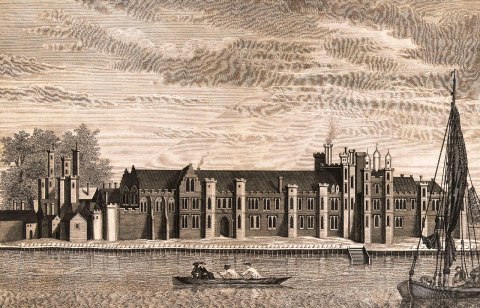
The Palace of Placentia during Tudor times
Perhaps feeling a little bit of buyers remorse, King Henry VII spent a great deal of his time at Greenwich and it was here that his spouse, Elizabeth of York, gave birth to King Henry VIII.Henry VIII would go on to make the Palace of Placentia his primary royal palace, and often threw huge parties, banquets and jousting matches in its grounds. The Christmas party that Henry threw in 1516 went down in legend, as this was the first masquerade party ever seen in England! As was written at the time:“The King this year kept the feast of Christmas at Greenwich, where was such an abundance of the viands served to all corners of any honest behaviour as hath been few times seen.”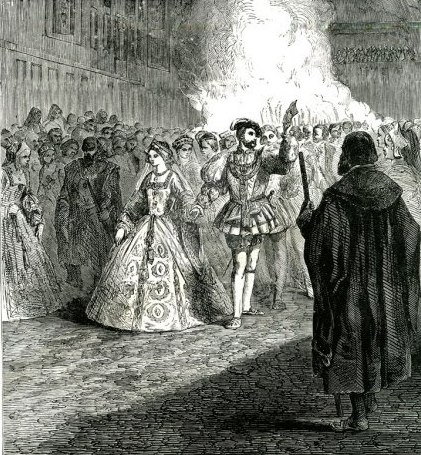 Henry VII and Anne Boleyn at a ball in Greenwich PalaceThe following years saw the birth of Mary I and Elizabeth I at the Palace of Placentia. In fact, modern day visitors to Greenwich Park can still visit the tree where Queen Elizabeth ‘oft partook of refreshements’ in its hollowed trunk!It was also in the Palace’s grounds that Sit Walter Raleigh was said to have thrown his cloak over a puddle so that Queen Elizabeth would not get her feet wet.
Henry VII and Anne Boleyn at a ball in Greenwich PalaceThe following years saw the birth of Mary I and Elizabeth I at the Palace of Placentia. In fact, modern day visitors to Greenwich Park can still visit the tree where Queen Elizabeth ‘oft partook of refreshements’ in its hollowed trunk!It was also in the Palace’s grounds that Sit Walter Raleigh was said to have thrown his cloak over a puddle so that Queen Elizabeth would not get her feet wet.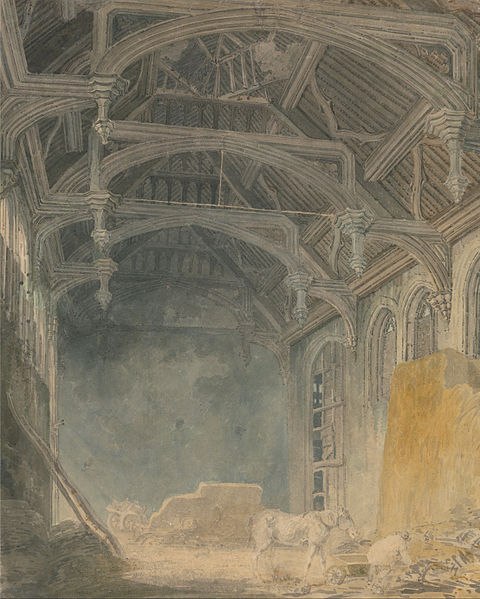
 Henry VII and Anne Boleyn at a ball in Greenwich PalaceThe following years saw the birth of Mary I and Elizabeth I at the Palace of Placentia. In fact, modern day visitors to Greenwich Park can still visit the tree where Queen Elizabeth ‘oft partook of refreshements’ in its hollowed trunk!It was also in the Palace’s grounds that Sit Walter Raleigh was said to have thrown his cloak over a puddle so that Queen Elizabeth would not get her feet wet.
Henry VII and Anne Boleyn at a ball in Greenwich PalaceThe following years saw the birth of Mary I and Elizabeth I at the Palace of Placentia. In fact, modern day visitors to Greenwich Park can still visit the tree where Queen Elizabeth ‘oft partook of refreshements’ in its hollowed trunk!It was also in the Palace’s grounds that Sit Walter Raleigh was said to have thrown his cloak over a puddle so that Queen Elizabeth would not get her feet wet.
With the increased popularity of the Palace of Placentia in Greenwich, the nearby Eltham Palace went out of favour with the royal family and fell into disrepair.
Although both King James I and King Charles I continued to make the Palace their principal residence, the Parliamentary (Civil) War would soon bring an end to the favours of this old manor house. Once Cromwellhad taken control of the country, he tried to sell the Palace but to avail. Instead, he converted the entire building into a biscuit factory and then briefly a prisoner of war camp.By the time of the restoration in 1660, the Palace of Placentia had fallen into a state of disrepair. King Charles II subsequently ordered the old buildings to be demolished and in their place a ‘most magnificent palace of freestone’ to be built. Unfortunately only a part of this new palace was ever built (it now forms part of the University of Greenwich buildings), and by the reign of William and Mary the royal family had turned their attention to Kensington Palace and Hampton Court.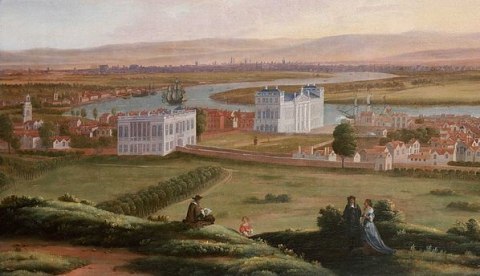

The half finished Palace of Placentia shortly after the restoration. It would shortly be turned into the new Naval Hospital.
The half-finished Palace of Placentia was subsequently merged into the new Naval Hospital, which later became the Royal Naval College and now the University of Greenwich and the Royal Naval Museum.Today the only part of the old Palace of Placentia that remains, is the 17th century Queen’s House, which was commissioned by King James I and built by the renowned architect Inigo Jones as the first ever classical-styled building in Britain.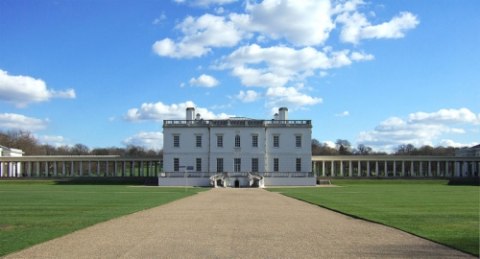 The Queens House Today. Photograph © Bill Bertram 2006
The Queens House Today. Photograph © Bill Bertram 2006
 The Queens House Today. Photograph © Bill Bertram 2006
The Queens House Today. Photograph © Bill Bertram 2006
Comments
Post a Comment